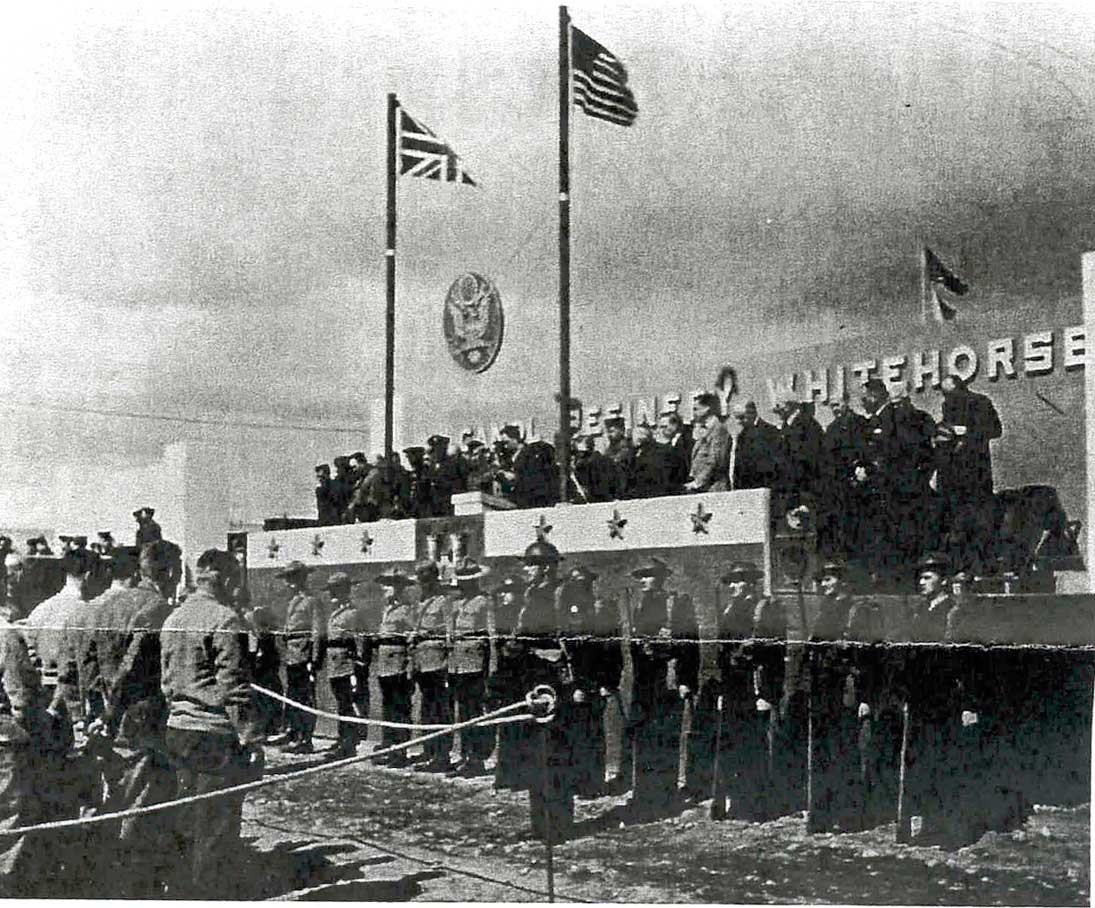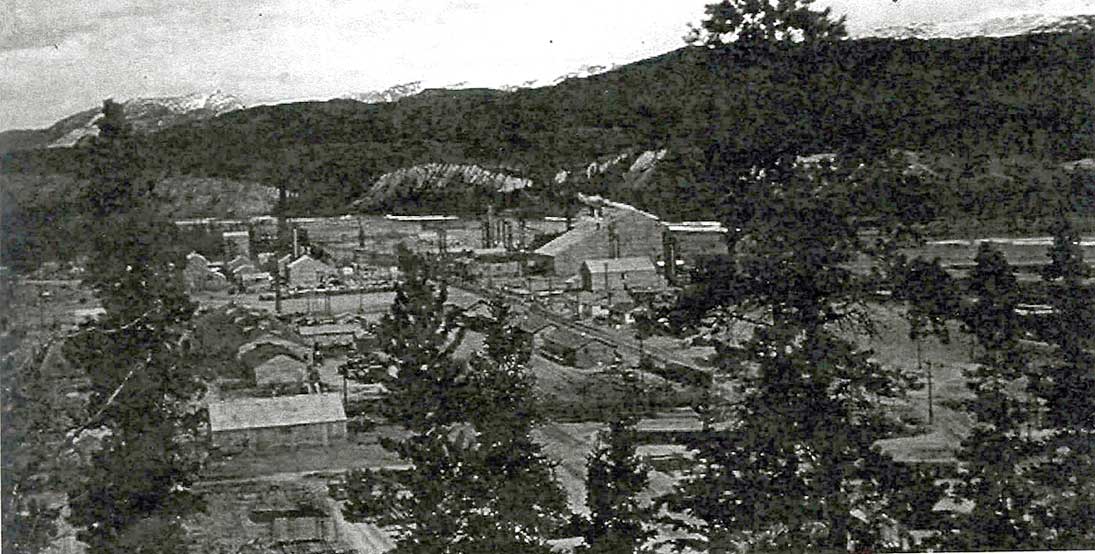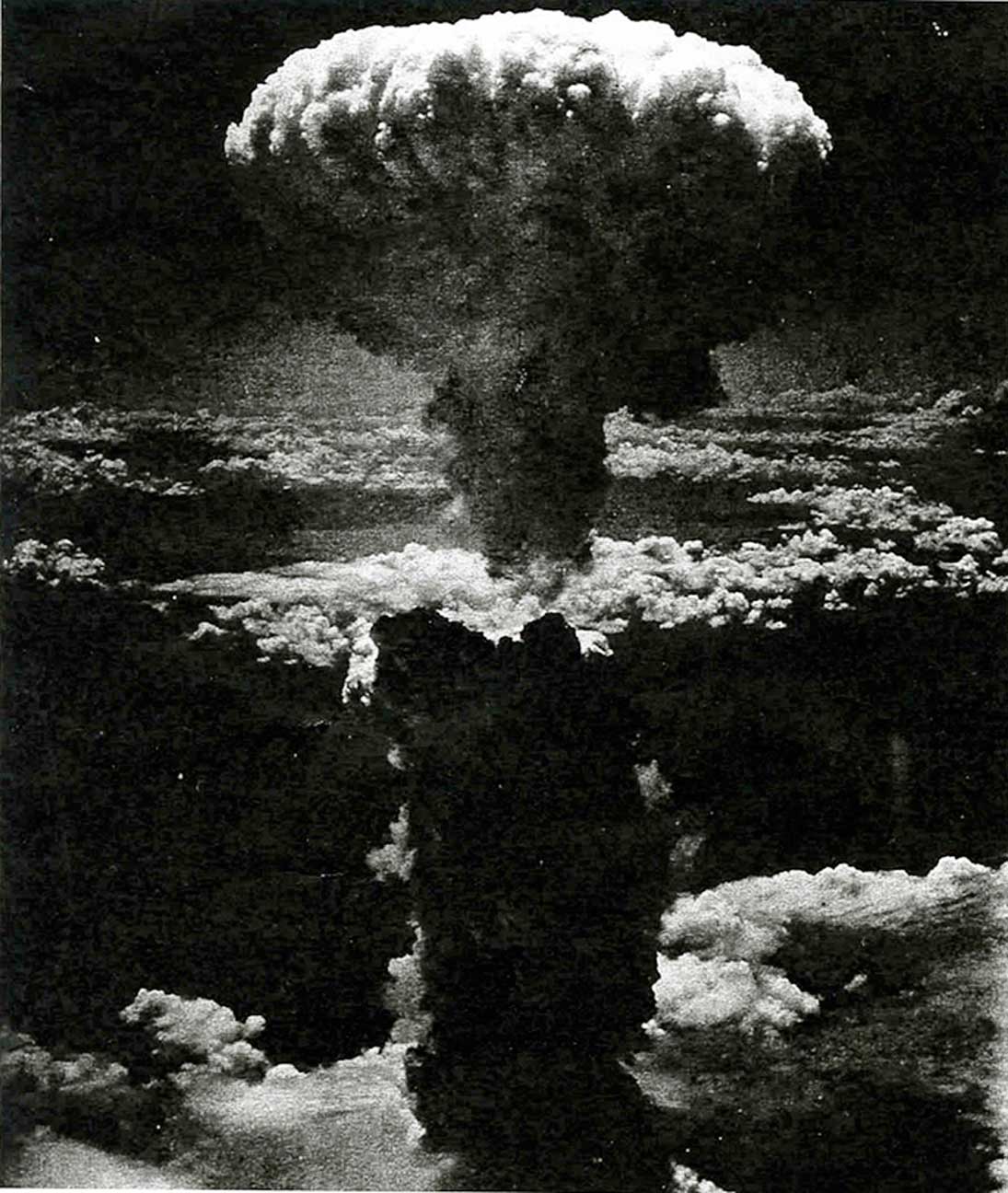
Photo by Photo Submitted
THE BIG MOMENT – The opening ceremonies for the CANOL Refinery take place in Whitehorse on April 30, 1944. B.C. Archives, C-02803

Photo by Photo Submitted
THE BIG MOMENT – The opening ceremonies for the CANOL Refinery take place in Whitehorse on April 30, 1944. B.C. Archives, C-02803

Photo by Photo Submitted
WHERE IT WAS – The CANOL Refinery site in Whitehorse. YUKON ARCHIVES, PENBERTHY FONDS, 94-127# 6

Photo by Photo Submitted
DEADLY AND HISTORY-MAKING – The mushroom cloud of the atomic bombing of the Japanese city of Nagasaki on Aug. 9, 1945, rose some 18 km (11 miles) above the bomb’s hypocentre. http://www.archives.gov/research/military
Pipe and equipment were brought up by a laborious route for the CANOL Project.
Pipe and equipment were brought up by a laborious route for the CANOL Project.
From factories in the United States to Edmonton by train, then unloaded on barges and pushed by riverboats to Camp CANOL on the MacKenzie River.
Ironically, not all barges came back empty. Some stopped to pick up loads of black ore that had been mined at the government’s Eldorado Mine at Great Bear Lake.
It was pitchblende, a form of the mineral uraninite occurring in brown or black pitch-like masses, which was destined to be refined into pure Uranium 235 for the Manhattan Project and sent to the University of Chicago’s reactor for the atomic bomb.
Port Radium on Great Bear Lake is where Gilbert LeBine found pitchblende in 1930 and started Canada’s first radium mines. During WW II, the Canadian government took over the property, the ore suddenly important. Now closed.
The CANOL Project was a short-lived and ill-planned mistake. It took 20 months instead of the estimated eight months to complete.
The refinery was operated for less than a year and was shut down April 1, 1945, the assets sold at bargain prices. It became a subject of investigation.
The cash-draining CANOL Project was a hot topic in Washington, and the Senate inquiry into the project brought notoriety to the senator heading it, Harry S. Truman.
Lt. Gen. Brehon Somervell, commanding general of the Army’s forces, bore the brunt of the sharpest criticisms.
“There may be some slight excuse for Gen. Somervell’s original hasty decision in view of the tremendous pressure on him at the time, but his continued insistence on the project in the face of these repeated warnings is inexcusable.”
Truman became vice-president and soon the 33rd president, when Roosevelt suddenly died in 1945.
He authorized the first atomic bomb used in warfare on Hiroshima, Japan on August 6, 1945. The second bomb was dropped on Nagasaki on August 9, bringing an end to World War II.
Canada’s Prime Minister Mackenzie King spent his remaining three years with President Truman in Washington.
The first private meeting of Prime Minister King and President Truman came seven weeks after detonating the atomic bomb on Hiroshima, which killed roughly 100,000 people, and Nagasaki, which left 50,000 dead, and historians perplexed over the rationale of the second bomb.
It marked the first and only occasion on which nuclear bombs have been used. The minister, along with the British leader Attlee, were the only two heads of state in the world to know in advance of the United States’ plan to go nuclear.
President Roosevelt told Prime Minister King at their last meeting in March of the decision and that August would be the likely date.
The early consultation was in recognition of Canada’s contribution to the building of the bomb and as a supplier of the vital ingredient, uranium.
On the day before the Hiroshima explosion, Mackenzie King wrote of the pending event:
“It makes one very sad at heart to think of the loss of life that will occasion among innocent people as well as those that are guilty.
“It can only be justified through the knowledge that for one life destroyed, it may save hundreds of thousands and bring this terrible war quickly to a close.”
The writer is a Whitehorse author and historian. This is an excerpt from her 2017 book Financial Sourdough Starter Stories: The Trump Family, From Whitehorse to the White House, the Klondike Gold Rush, Harry Truman and the A-Bomb.
By PAT ELLIS
In order to encourage thoughtful and responsible discussion, website comments will not be visible until a moderator approves them. Please add comments judiciously and refrain from maligning any individual or institution. Read about our user comment and privacy policies.
Your name and email address are required before your comment is posted. Otherwise, your comment will not be posted.
Comments (1)
Up 3 Down 0
My Opinion on Apr 20, 2018 at 7:24 pm
Is this an article or an ad for a Book by the Author?